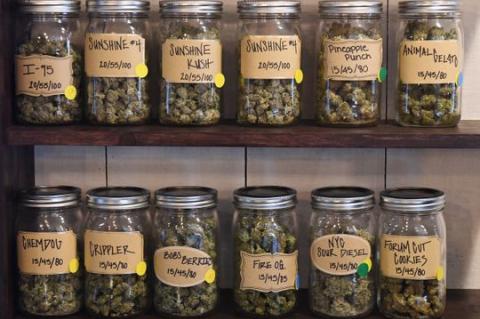U.S. ramps up testing in search of vaping illness cause as cases near 1,500
U.S. health officials on Thursday reported another 180 cases of vaping-related lung illnesses and announced plans to start testing aerosols produced by e-cigarettes and vaping products as they search for the source of the nationwide outbreak that has so far killed at least 33 people in 24 states.
The U.S. Centers for Disease Control and Prevention (CDC) also said it plans to start testing lung tissue and fluids collected from people who became sick in the outbreak. The CDC said the new testing may lend insight into chemical exposures contributing to the outbreak.
The CDC now reports 1,479 confirmed and probable U.S. cases of the mysterious respiratory illness tied to vaping, up from 1,299 a week ago, an indication that the public health crisis has shown no sign of slowing.
Last week, the CDC and the U.S. Food and Drug Administration said that while many patients became ill after vaping products containing THC, the psychoactive ingredient in marijuana, some had only used nicotine vape products. They said more than one root cause may be behind the outbreak.
Investigators primarily have been testing the liquids in vape products. Testing the aerosol produced after the liquids are heated might show whether that causes a chemical reaction that produces a toxic substance.
“They might be able to see components that we don’t see in the raw materials,” said an official in the New York Health Department’s Wadsworth laboratory, which has been testing product samples for the state.
A preliminary report seen by Reuters of vaping product samples collected from Wisconsin patients and tested by the FDA showed that more than half contained THC.Of the THC-containing products, two-thirds also tested positive for Vitamin E acetate, a cutting agent believed to be used to stretch the amount of THC oil, and an early suspect in efforts to determine the cause of the injuries.
The results from Wisconsin match up with earlier reports from state and federal officials. FDA officials last week said it found Vitamin E acetate in 47% of the first 225 THC products it had analyzed.
Among the results, 14 products contained THC, nine of which also tested positive for Vitamin E acetate, while another seven contained nicotine.
New York health officials have now tested nearly 200 products.
“We’ve got nicotine pens; we’ve got THC-containing pens; we’ve got Vitamin E acetate associated with a lot of the THC pens, but we are not in a position to say what’s the cause of this dreadful illness,” the official with New York’s testing lab said.
Many of the products have no labels. Health officials in New York and Utah said they suspect many THC products that do carry labels - such as those under the Dank Vapes brand - are counterfeit.
In Utah, state epidemiologist Dr. Angela Dunn said the outbreak hit a peak in July and has not let up.
More than 90% of patients reported having vaped THC, and only a handful of cases denied using THC, Dunn said.
The state has tested 20 nicotine vape products and found nothing unexpected. Of 19 THC-containing products, 89% showed evidence of Vitamin E acetate.
None of the state officials said conclusively that the cutting agent was the cause of the injuries, but it remains a suspect.
Dunn said THC is the common denominator in most of Utah’s cases, and until an exact cause is found, the state is focusing on getting people to stop vaping THC.
“It’s the only thing we have,” she said.








